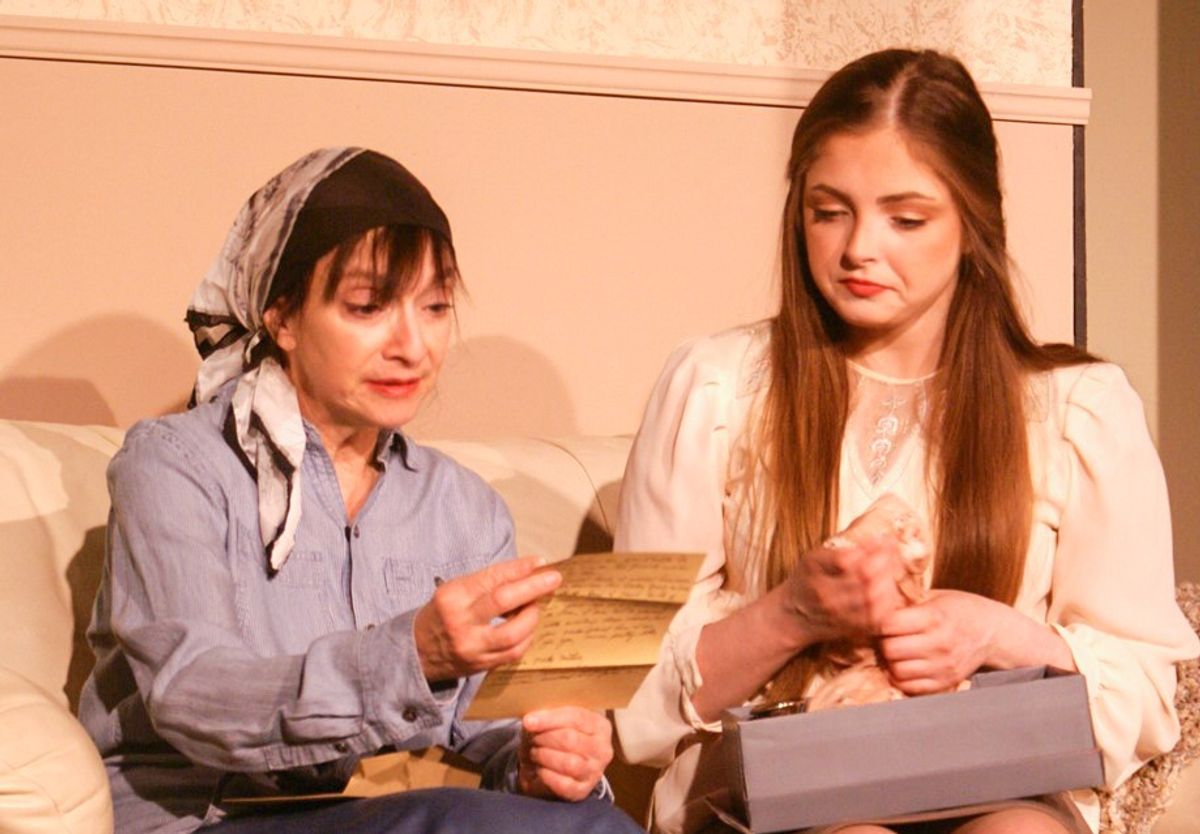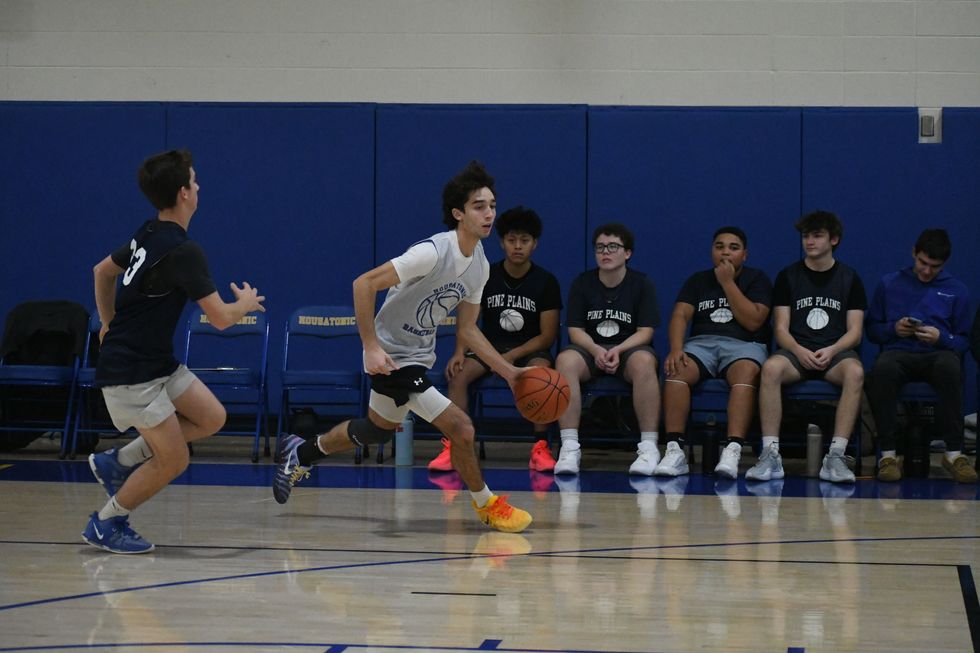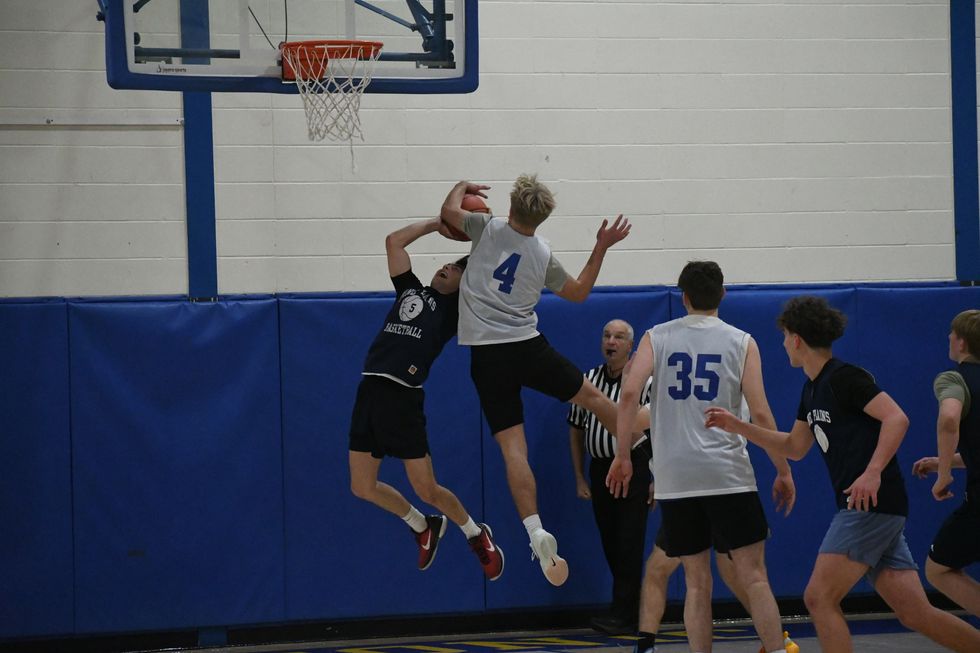World War II drama on the stage in Copake

Constance Lopez, left, and Karissa Payson in "A Shayna Maidel," onstage through Sunday, March 24, at the Copake Grange.
Stephen Sanborn

Constance Lopez, left, and Karissa Payson in "A Shayna Maidel," onstage through Sunday, March 24, at the Copake Grange.
There are three opportunities coming up in March — the 22nd, 23rd and 24th — to be transported through time and memory when The Two of Us Productions presents “A Shayna Maidel” at the Copake Grange.
Director Stephen Sanborn brings to life Barbara Lebow’s award-winning drama, weaving together the poignant reunion of two sisters after World War II through the haunting echoes of their past.
“A Shayna Maidel,” meaning “pretty girl” in Yiddish, tells the story of the reunion of two sisters after World War II, one having survived the Nazi concentration camps. Co-producers Sanborn and his wife, Constance Lopez, have been working with the Copake Grange since 2017 bringing in one-night events such as suspense theater, staged readings, murder mysteries, karaoke and even Sanborn’s own jazz quartet. They are also producing full-scale productions like “A Shayna Maidel” at least twice a year.
“We are supporting the longer-term relationship we have with the Grange where we want to present on a regular basis as a part of working with them,” said Sanborn. Having previously produced Arthur Miller’s “Broken Glass,” several productions of “Cabaret” and a staged reading of “I Am a Camera,” the book that “Cabaret” is based on, Sanborn shared, “We have a particular affinity for this time period. This is the time period where a lot of things happened in the world that set the course in many ways for where we are today.”
“A Shayna Maidel” delves into the complexities of family, survival and resilience in the aftermath of tragedy. Sanborn explained, “It’s not all happiness and light, but it’s positive in a way that, despite all that happens, you can find a way to go forward.” The play’s exploration of memory, particularly through the lens of one sister’s experiences in Auschwitz, adds layers of emotion and depth to the narrative. Much of the story takes place through these memories and dream sequences.
In order to accomplish the transitions between past and present, dream and reality, Sanborn utilizes lights and colors, creating separate worlds: “The way we handle the dream sequences is that I’m able to do a color wash on the whole stage. I use blue, a deep blue and blush pink to denote the memory sequences.”
Sanborn reflected on the relevance of this particular story, stating: “We’re trying to be true to the material because it speaks to experiences that people are having right now. You could pick several places in the world where families are being separated or people are being oppressed and worse. There’s certainly a message there that’s relevant, and we’re trying to make sure that we tell it with the appropriate level of strength so that it comes across for what it is.”
Through its exploration of themes such as immigration, family separation, oppression and memory, “A Shayna Maidel” is sure to resonate with audiences on a profound level. “I think it’s a story that needs to be told,” said Sanborn.
Witness this powerful production, as The Two of Us Productions continues its mission to bring thought-provoking theater to the community Friday, March 22, through Sunday, March 24, at the theater at the Copake Grange, 628 Empire Road in Copake, New York. Friday and Saturday performances are at 7:30 p.m. and Sunday matinee is at 3 p.m.
Tickets are $20 for adults, and $15 for students and older adults. Call for group rates. For reservations, visit www.TheTwoOfUsProductions.org or call 518-329-6293.
The Salisbury Winter Sports Association (SWSA) will host its annual Junior Jump Camp, a two-day introduction to ski jumping, on Saturday and Sunday, Dec. 27 and 28, from 9 a.m. to 2 p.m. at Satre Hill in Salisbury.
The camp is open to children ages 7 and up and focuses on teaching the basics of ski jumping, with an emphasis on safety, balance and control, using SWSA’s smallest hill. No prior experience is required.
The cost is $50 per child and includes instruction and lunch on both days. For more information or to register, visit www.skireg.com/swsa-camp or email info@jumpfest.org
Jesse Bunce, first selectman of North Canaan.
LITCHFIELD — The Northwest Hills Council of Governments welcomed six newly elected municipal leaders Thursday, Dec. 11, at its first meeting following the 2025 municipal elections.
The council — a regional planning body representing 21 towns in northwest Connecticut — coordinates transportation, emergency planning, housing, economic development and other shared municipal services.
Barkhamsted First Selectman Meaghan Cook, Goshen First Selectman Seth Breakell, Kent First Selectman Eric Epstein, Norfolk First Selectman Henry Tirrell, North Canaan First Selectman Jesse Bunce and Torrington Mayor Molly Spino were each elected to their post in November.
They filled the seats of their predecessors on the COG, who were each given a toast of appreciation: Nick Lukiwsky (Barkhamsted), Todd Carusillo (Goshen), Marty Lindenmeyer (Kent), Matt Riiska (Norfolk), Brian Ohler (North Canaan) and Elinor Carbone (Torrington).
COG Executive Director Rob Phillips said the outgoing members were given a going away mug that read “You’re living the dream still.” Members voted to appoint Warren First Selectman Greg LaCava to fill a vacancy on the Council’s Executive Committee. COG members voted by paper ballot, and LaCava defeated Burlington First Selectman Doug Thompson for the vacant seat.
Ryan Segalla takes a fadeaway shot over a defender.
FALLS VILLAGE — Housatonic Valley Regional High School’s boys basketball team defeated Pine Plains High School 60-22 in a scrimmage Tuesday, Dec. 9. The non-league preseason game gave both sides an opportunity to run the court ahead of the 2025-26 varsity season.
HVRHS’s senior-heavy roster played with power and poise. The boys pulled ahead early and kept their foot on the gas through to the end.
By halftime the score was 33-8. Junior varsity players subbed in for the second half, but not before the starters got some in-game dunk practice. By the end Housatonic totaled 60 points to Pine Plains’ 22.

Nick Crodelle led the Mountaineers offensively with 13 points. Anthony Labbadia and Wyatt Bayer scored nine points each. Anthony Foley scored eight points. Owen Riemer and Ryan Segalla each scored seven points. Peyton Bushnell hit a three-pointer. Jaxon Visockis and Henry Berry each scored two points.
HVRHS begins Berkshire League competition on the road at Nonnewaug High School Tuesday, Dec. 16, with a 6 p.m. tip off.


Katie Moore delivers toys to the Stuff a Truck campaign held by the Kent Volunteer Fire Department last weekend. Donated toys are collected so that parents, who need some assistance, may provide their children with gifts this Christmas. Accepting the donation are elves Fran Goodsell and Karen Iannucci
KENT — Santa’s elves were toasty warm as they collected toys for the children of Kent.
Keeping with annual tradition, Fran Goodsell and Karen Iannucci manned the Stuff a Truck campaign sponsored by the Kent Volunteer Fire Department on Saturday, Dec. 6, and Sunday, Dec. 7. Sitting in front of a fire pit in the firehouse parking lot between donations from residents, they spoke of the incredible generosity displayed every season. That spirit of giving was clear from the piles of toys heaped on a table.
“This is always so gratifying,” said Goodsell, noting that certain businesses, including High Watch Recovery Center, Wilson’s, and Kent and South Kent schools needed a “shout out” for all they’ve done. She said South Kent School focuses on gifts for older children, which is a group that often is overlooked.
Unwrapped contributions are sought for children 1 to 15 years old who might otherwise find little or nothing from Santa, they said. The bounty will be set up at the Community House on Thursday, allowing parents to come and take what they want. If there are still items left, grandparents are invited to “shop.”
The atmosphere was festive Saturday, as a stuffed dog began barking a Christmas tune whenever someone walked in front of it. A large decked-out bear posted at the parking lot entrance reminded passersby of the event. Visiting children were able to get a close-up look at the fire truck and walk through the firehouse if they wished.
Goodsell and Iannucci were very grateful to those who donated wood for the fire pit. “And so many asked if they could bring us coffee or hot chocolate,” said Iannucci.
Goodsell said many who came talked about having grown children who were recipients of the gifts when their families were struggling. “They are so glad to be able to give back,” she said.